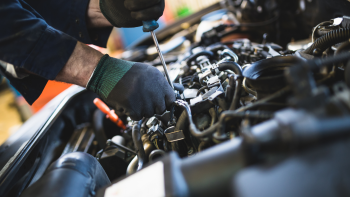Car Care!

What you need to get started
Assuming you would like tips for those just starting out with at-home car maintenance:
To do any type of car repair or maintenance, you need a few tools. You don’t need to buy the most expensive tools, but get ones that are durable and will last a long time. Here is a list of suggested items:
-A set of metric sockets and wrenches: You will need these to remove and replace bolts. A full set includes sizes 8mm to 19mm, but you may not need all of them.
-A Phillips and flathead screwdriver: These are essential for removing screws.
-Pliers: These come in handy for a number of tasks, such as removing hoses and wires.
-An adjustable wrench: This can be used in place of pliers in some cases.
-A jack and jack stands: You will need these to lift up your car so that you can work underneath it. Be sure to read your car’s manual to find out where the best place to put the jack is.
-Lug nut wrench: You will need this to remove the wheel when changing a tire.
-Flashlight: A flashlight comes in handy when you are working in dark areas or trying to see something small.
-Funnel: This is helpful when adding fluids to your car. It helps prevent spillage.
How to do an oil change
 Changing your car's oil is one of the most important things you can do to prolong the life of your vehicle. Here's a step-by-step guide on how to change your oil, so you can keep your car running smoothly for years to come.
Changing your car's oil is one of the most important things you can do to prolong the life of your vehicle. Here's a step-by-step guide on how to change your oil, so you can keep your car running smoothly for years to come.
1) Lift the hood and locate the oil dipstick. Pull out the dipstick and wipe it clean with a rag.
2) Insert the dipstick all the way back into the tube, then pull it out again to check the oil level. The oil should be between the "full" and "low" marks on the dipstick. If it's below the "low" mark, you'll need to add more oil.
3) Unscrew the oil filler cap (located on top of the engine) and add oil until it reaches the "full" mark on the dipstick. Screw the filler cap back on.
4) Locate the oil drain plug (usually located at the bottom of the engine). Place a drain pan underneath, then unscrew and remove the drain plug. Allow all of the old oil to drain out completely.
5) Screw in a new oil drain plug (make sure it's tight!) and discard of used oil properly. Many service stations will accept used motor oil for recycling.
6) Finally, add fresh motor oil to your car until it reachesthe "full" mark onthe dipstick once again, then screw on
How to change your own tires
If you're comfortable getting dirty and have a little patience, changing your own tires is a relatively easy process. Plus, it's a great way to save money since you won't have to pay for labor at a garage or service station. Here's how to do it:
1. Park your car on a level surface and engage the emergency brake.
2. Loosen the lug nuts on the wheel that you want to remove. You'll need a wrench for this.
3. Lift the wheel off of the ground using a jack. Place the jack under the frame of the car (Consult your car's owner's manual to see exactly where to place it).
4. Once the wheel is lifted off of the ground, remove the lug nuts and set them aside. Then pull the tire off of the wheel.
5. Take your new tire and line it up with the wheel. Push it onto the wheel until it's snug against the other side of the hubcap/wheel cover.
6. Replace the lug nuts and hand-tighten them as much as you can.
7. Lower the jack so that the tire is touching the ground again and then tighten each lug nut with your wrench, going in a star pattern (one lug nut at a time in a sequence like this: top left, bottom right, top right, bottom left). Make sure each nut is tight before moving on to another one - if one is
 Conclusion
Conclusion
DIY car maintenance is a great way to save money and take better care of your vehicle. By familiarizing yourself with the basics, you can detect potential problems early on and keep your car in tip-top shape. Although it might seem intimidating at first, DIY car maintenance can be an enjoyable activity that will help you build confidence in taking care of your own vehicle. With just a few tools and some basic knowledge, anyone can make simple repairs or perform routine maintenance on their vehicle themselves!
DIY car maintenance is a great way to save money and take better care of your vehicle. By familiarizing yourself with the basics, you can detect potential problems early on and keep your car in tip-top shape. Although it might seem intimidating at first, DIY car maintenance can be an enjoyable activity that will help you build confidence in taking care of your own vehicle. With just a few tools and some basic knowledge, anyone can make simple repairs or perform routine maintenance on their vehicle themselves!


 Changing your car's oil is one of the most important things you can do to prolong the life of your vehicle. Here's a step-by-step guide on how to change your oil, so you can keep your car running smoothly for years to come.
Changing your car's oil is one of the most important things you can do to prolong the life of your vehicle. Here's a step-by-step guide on how to change your oil, so you can keep your car running smoothly for years to come.
 Conclusion
Conclusion
Comments your thoughts